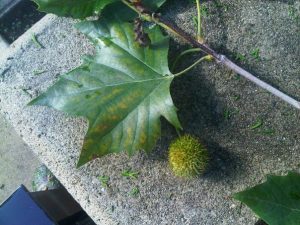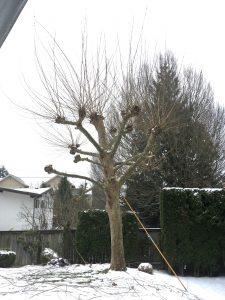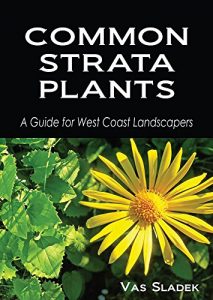I’m kidding, of course, I don’t suffer from rashes after tree pruning. But I do find pollarding too forced and ugly immediately after. In summer, when the tree crowns are full of foliage the trees look fine.
Incredibly, I’ve been an ISA certified arborist since 2006 but last week was my first-ever pollarding session. Since our site was all snowy, it was a great time to prune trees.
Why pollarding?
So why do we resort to pollarding? In the very old days, people understood that cutting down all of their trees for firewood was short-sighted. So instead they pollarded their trees and then used the wood. But times have changed.
Now we pollard trees to keep them at a smaller size then they would otherwise reach. It makes sense at our site where three London plane trees (Platanus x acerifolia) are located close to the pool. See the picture below taken from my Kindle e-book: Common Strata Plants: A Guide for West Coast Landscapers, available for download from Amazon.
Pollarding involves the removal of the upper branches of a tree which then promotes a dense head of foliage and branches. It just looks like hell right after you do it. In a perfect world, the London plane trees could be let go to grow as big as they wished. I wish!
The trick, then, is to pick a height and pollard the trees annually. The actual work is very simple because you’re simply beheading skinny branches that shot up from the previous pruning cuts. Staying safe while you prune is more demanding.
My arborist technician apprentice climbed the tree while I stayed on the ground and used a ladder with pole pruners. Once in a while I would steal a big-brother glance at my eager apprentice to make sure his ropes were still supporting him.
Timing
Late winter or early spring are best for pollarding. One exception are maple (Acer species) which bleed sap when cut at these times. The pruning rule for maples is before Christmas.
If you have trees that are outgrowing their space and you don’t want to lose them or can’t afford to replace them, then by all means pollard your trees annually. The trees look horrific immediately after pruning but in summer they’re fine. Personally, I would prefer not to pollard anything.







